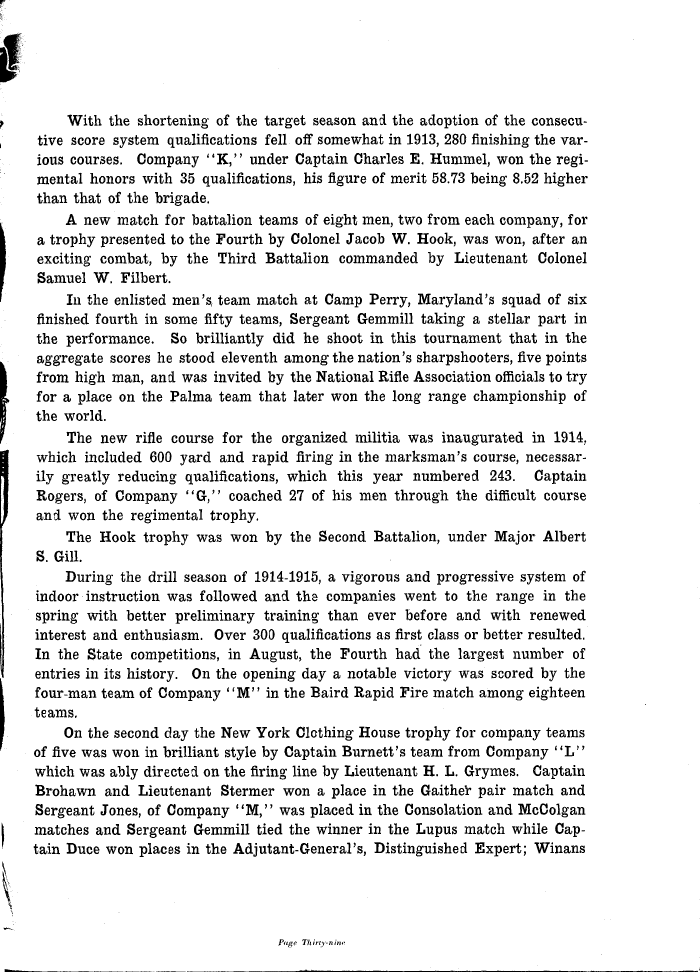 |
||||
 |
||||
| With the shortening of the target season and the adoption of the consecutive score system qualifications fell off somewhat in 1913, 280 finishing the various courses. Company "K," under Captain Charles E. Hummel, won the regimental honors with 35 qualifications, his figure of merit 58.73 being 8.52 higher than that of the brigade. A new match for battalion teams of eight men, two from each company, for a trophy presented to the Fourth by Colonel Jacob W. Hook, was won, after an exciting combat, by the Third Battalion commanded by Lieutenant Colonel Samuel W. Filbert. In the enlisted men's, team match at Camp Perry, Maryland's squad of six finished fourth in some fifty teams, Sergeant Gemmill taking a stellar part in the performance. So brilliantly did he shoot in this tournament that in the aggregate scores he stood eleventh among the nation's sharpshooters, five points from high man, and was invited by the National Rifle Association officials to try for a place on the Palma team that later won the long range championship of the world. The new rifle course for the organized militia was inaugurated in 1914. which included 600 yard and rapid firing in the marksman's course, necessarily greatly reducing qualifications, which this year numbered 243. Captain Rogers, of Company "G," coached 27 of his men through the difficult course and won the regimental trophy. The Hook trophy was won by the Second Battalion, under Major Albert S. Gill. During the drill season of 1914-1915, a vigorous and progressive system of indoor instruction was followed and the companies went to the range in the spring with better preliminary training than ever before and with renewed interest and enthusiasm. Over 300 qualifications as first class or better resulted. In the State competitions, in August, the Fourth had the largest number of entries in its history. On the opening day a notable victory was scored by the four-man team of Company "M" in the Baird Rapid Fire match among eighteen teams. On the second day the New York Clothing House trophy for company teams of five was won in brilliant style by Captain Burnett's team from Company "L" which was ably directed on the firing line by Lieutenant H. L. Grymes. Captain Brohawn and Lieutenant Stermer won a place in the Gaither pair match and Sergeant Jones, of Company "M," was placed in the Consolation and McColgan matches and Sergeant Gemmill tied the winner in the Lupus match while Captain Duce won places in the Adjutant-General's, Distinguished Expert; Winans Page Tit irty- n int* |